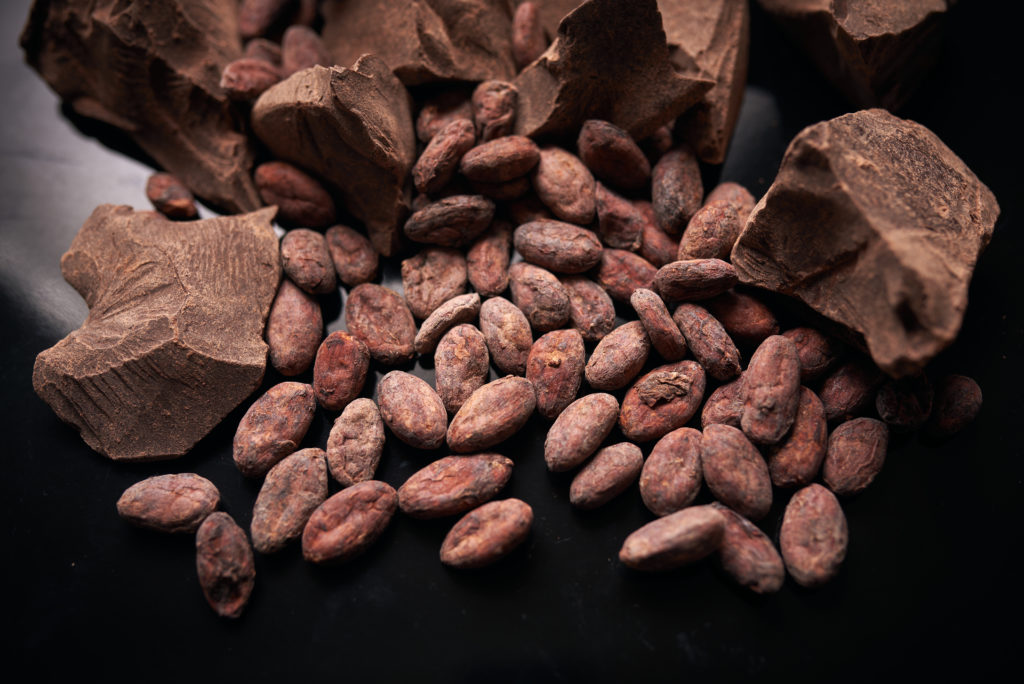Move over meat and seafood, chocolate might be the next big trend in the cell-based space. Cell-based chocolate is made by growing cells in a similar way to cultured meat and seafood, but the outcome is far different. So, what is cell-based chocolate and who are some of the major players in the burgeoning space?
In order to make cell-based chocolate, cells must be sampled through varieties that are selected for their taste, smell, melt and performance. Typically, cell cultures are extracted from cocoa beans to produce polyphenols, the compound found in rich dark chocolate. Once the surface of the cocoa is cleaned, a part of the bean is incubated at a certain temperature in a completely dark environment.
After several weeks, a bump forms over the bean’s surface, which is put into a suspension culture. While in bioreactor tanks, the cocoa cells ferment and achieve a rich flavor, which can be roasted to create ever more flavor. Once fermented, the cell-cultured cocoa nibs are ready to be turned into a variety of cell-based chocolate products.
Related: Is Cell-Based Fish the Next Big Food Innovation?
But who came up with the idea of cell-based chocolate? Researchers based in the world’s chocolate hub, Switzerland, claim to be the first to have grown chocolate in a lab. Scientists at the Zurich University of Applied Sciences (ZHAW) developed cell-based chocolate back in July 2021 to see what the future of food out of tanks might look like. The scientists also wanted to leave a light environmental footprint when they make the product.
Perhaps the most well-known company in the cell-based chocolate space is California Cultured, which has received $4 million in funding since it was founded in 2020. It uses novel plant stem cells grown in a low-cost food grade plant cell media. Its proprietary process results in a chocolate that highlights the best flavors and functional compounds of chocolate and reduces the need for more added sugar.
Finnish food industry giant Fazer has also entered the cell-based chocolate space in partnership with the VTT Technical Research Centre of Finland. While the bulk of Fazer’s cocoa currently comes from sustainably managed sources in Ecuador and West Africa, the company said it will continue to promote the development of cell-based chocolate across its home markets.
While everyone wants to satisfy their sweet tooth with chocolate, traditional chocolate production isn’t so sweet. While around 70 percent of the world’s cocoa is grown in West Africa, the fast-rising demand for chocolate means that farmers are clearing tropical land to plant new cocoa trees. On the Ivory Coast, as much as 70 percent of the country’s illegal forest clearing is linked to cocoa planting.
In addition to deforestation, there are human rights issues too. Child labor is rampant in chocolate production, with as many as two million children working each year in dangerous conditions in Ghana and the Ivory Coast. Even though certifications like Fair Trade exist, it can be difficult for consumers to figure out whether chocolate is ethically sourced.
The demand for less environmentally intensive chocolate continues to fuel the development of new ingredients produced from alternative sources, like rice and even microflora-based dairy proteins. Cell-based chocolate further extends industry’s capacity to completely eradicate critical humanitarian and climate issues linked to ingredient farming, like child labor and deforestation.












Join or login to leave a comment
JOIN LOGIN